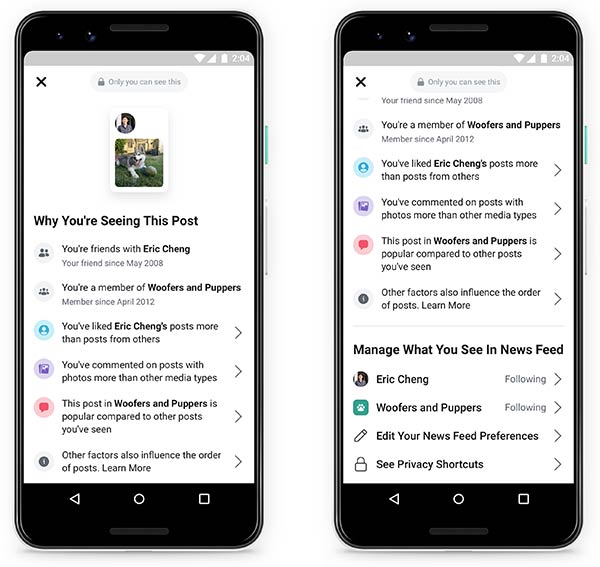If you’ve ever wondered why you are seeing the world’s most insane news articles on Facebook, beyond it being Facebook, then you’re in luck. After years of refusing to outline what dark magic it’s using to surface particular posts, Facebook is now lifting the lid.
Now, anyone can see why a post is in front of them by clicking a new “Why am I seeing this post?” link, similar to the previous “Why am I seeing this ad?” one that’s been around for a while.

Facebook made the announcement in a blog post of its own yesterday, and no, it’s not an early April fools. The good news is that Facebook is opening up about how your News Feed is managed, but the bad news is that you can’t actually control any of the work that goes into showing you posts, so you can’t tailor anything to your needs.
Facebook will link you to existing options to unfollow people or groups, though, so if you want to go nuclear and rid someone from your Facebook life, you can do just that.
We’re introducing “Why am I seeing this post?” to help you better understand and more easily control what you see from friends, Pages and Groups in your News Feed. This is the first time that we’ve built information on how ranking works directly into the app.

Further up, Facebook tells us a little more about what its trying to accomplish here:
The goal of News Feed is to show people the posts that are most relevant to them. “Why am I seeing this post?”, which can be found in the drop down menu in the right hand corner of a post, explains how your past interactions impact the ranking of posts in your News Feed. Specifically, you’ll be able to see:
- Why you’re seeing a certain post in your News Feed — for example, if the post is from a friend you made, a Group you joined, or a Page you followed.
- What information generally has the largest influence over the order of posts, including: (a) how often you interact with posts from people, Pages or Groups; (b) how often you interact with a specific type of post, for example, videos, photos or links; and (c) the popularity of the posts shared by the people, Pages and Groups you follow.
Facebook is in the midst of a transition, and it’s one that is taking some getting used to for both Facebook and users. A renewed focus on privacy and quality of content is in force right now and quite how that jives with Facebook’s existence is a mystery.
(Source: Facebook)
You may also like to check out:
- Download iOS 12.2 Final IPSW Links And OTA Update For iPhone And iPad
- Download: Apple Releases Final Version Of macOS 10.14.4, watchOS 5.2, tvOS 12.2
- Jailbreak iOS 12 / 12.1.2 / 12.1.2 Beta 3 With Unc0ver And Install Cydia, Here’s How [Tutorial]
- How To Downgrade iOS 12.2 To iOS 12.1.4 On iPhone Or iPad
- Apple’s Shortcuts App Updated With New Actions For Notes, Travel Data, More
- Apple Announces Its Own Credit Card Dubbed “Apple Card”, Here Are The Details
You can follow us on Twitter, add us to your circle on Google+ or like our Facebook page to keep yourself updated on all the latest from Microsoft, Google, Apple, and the Web.

